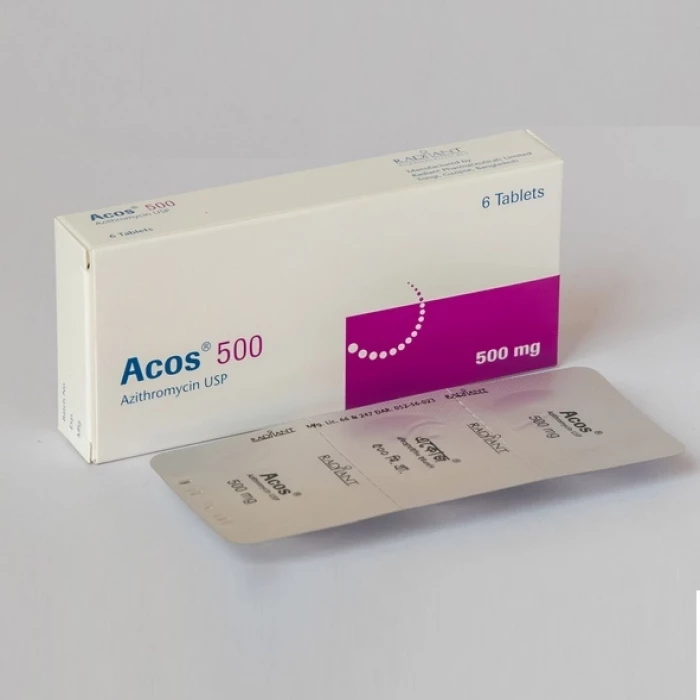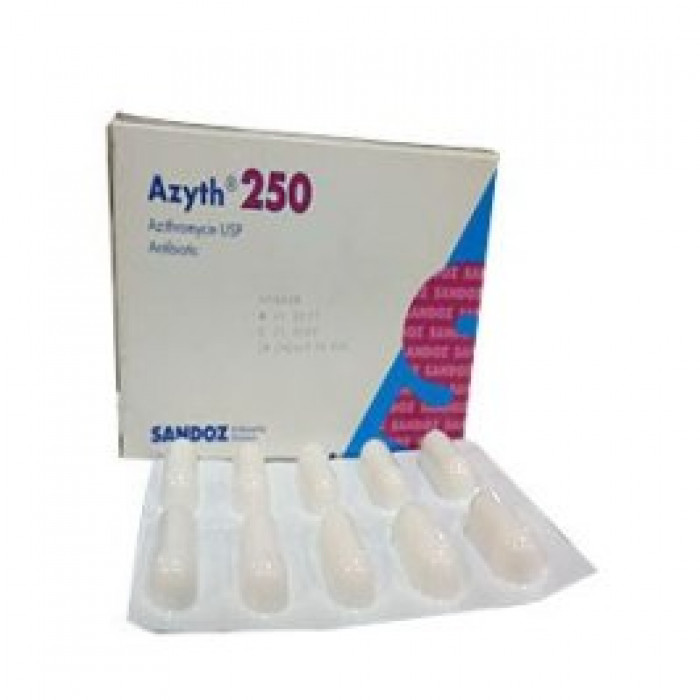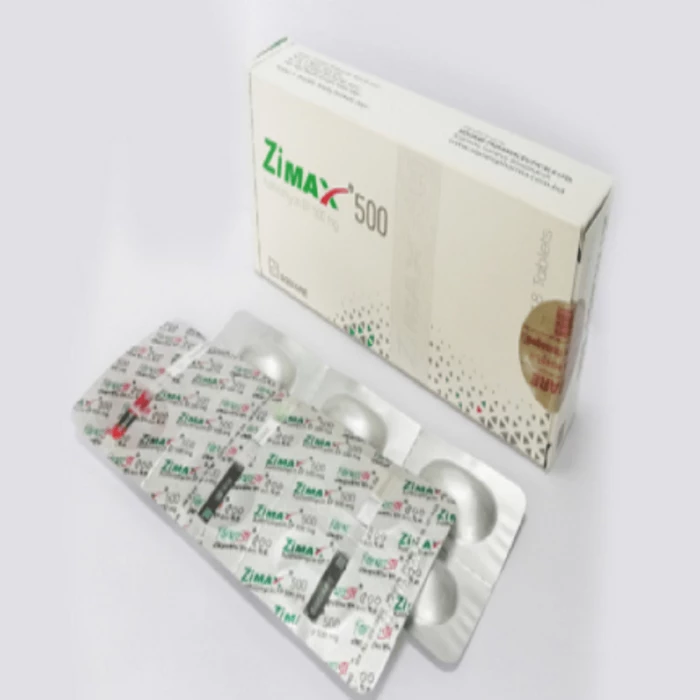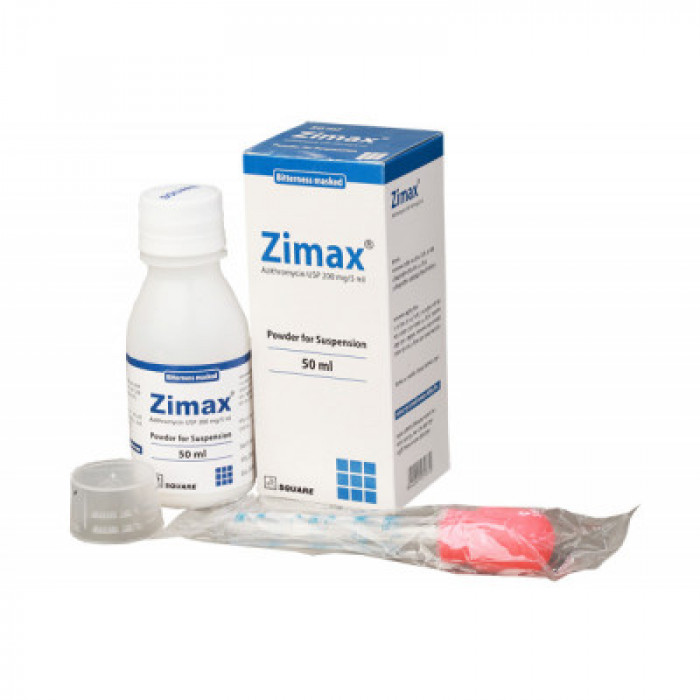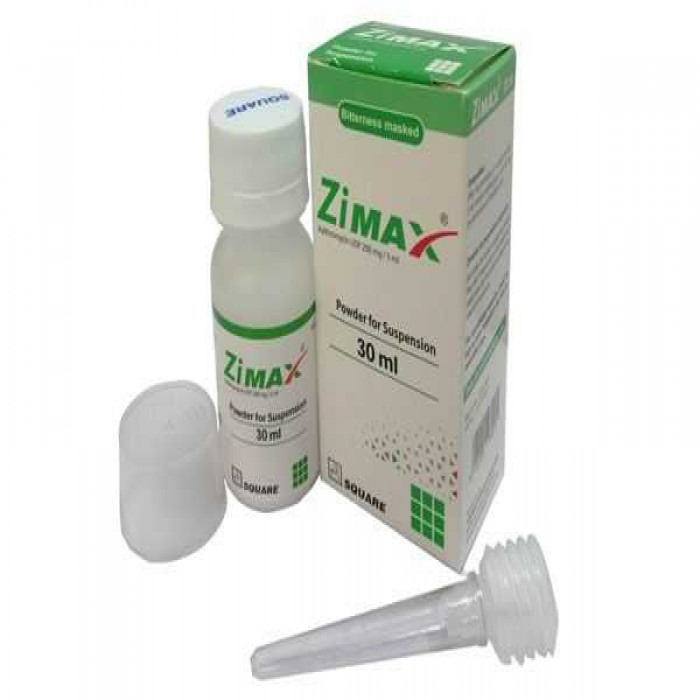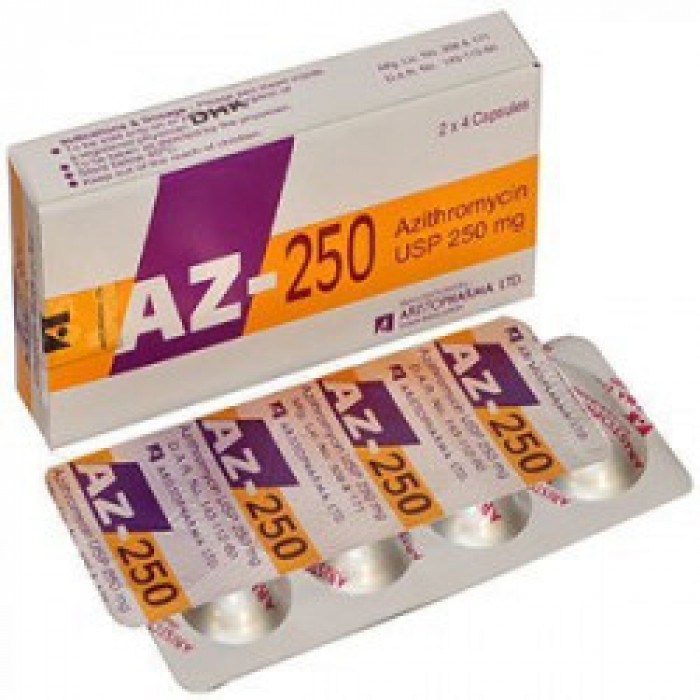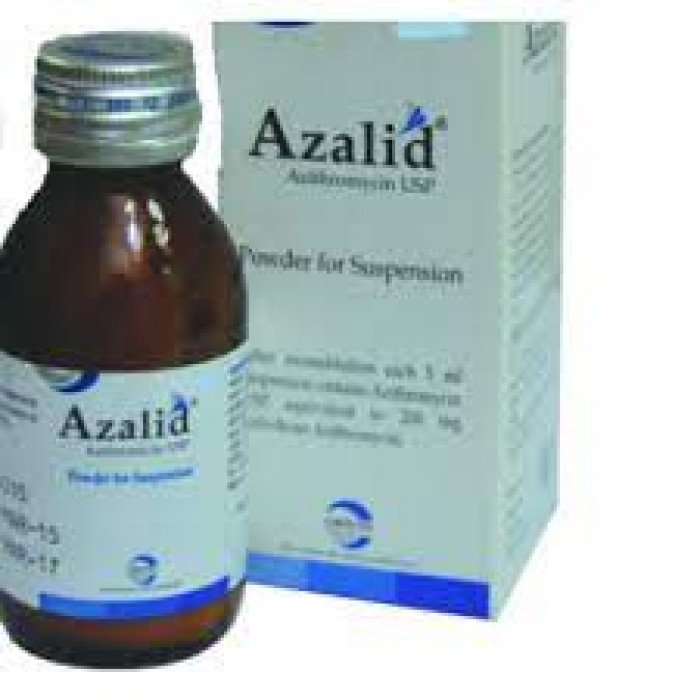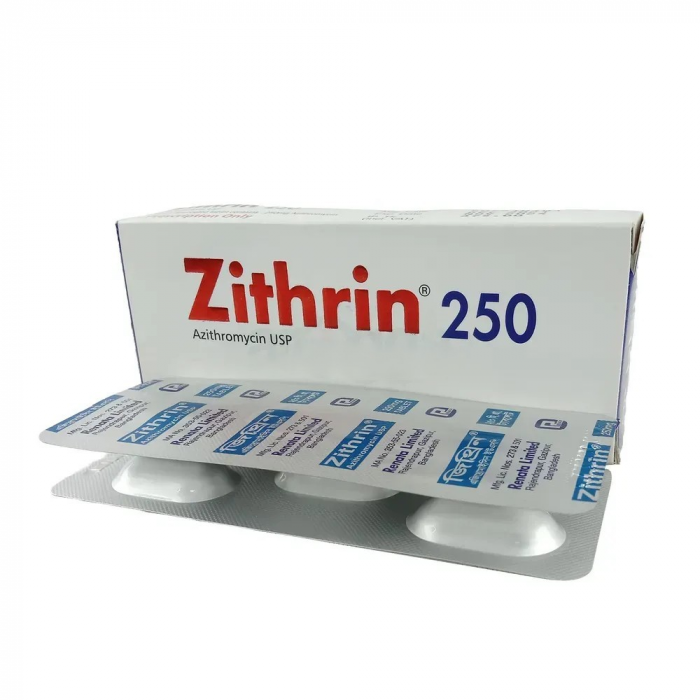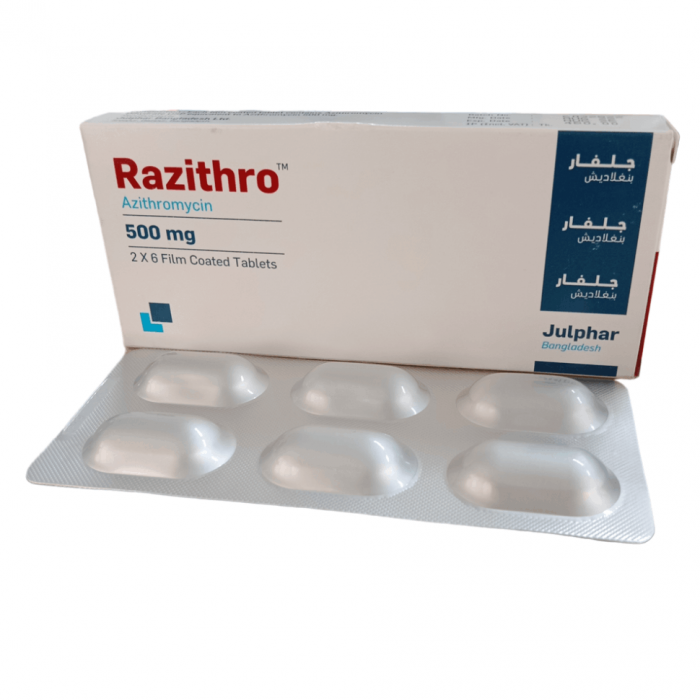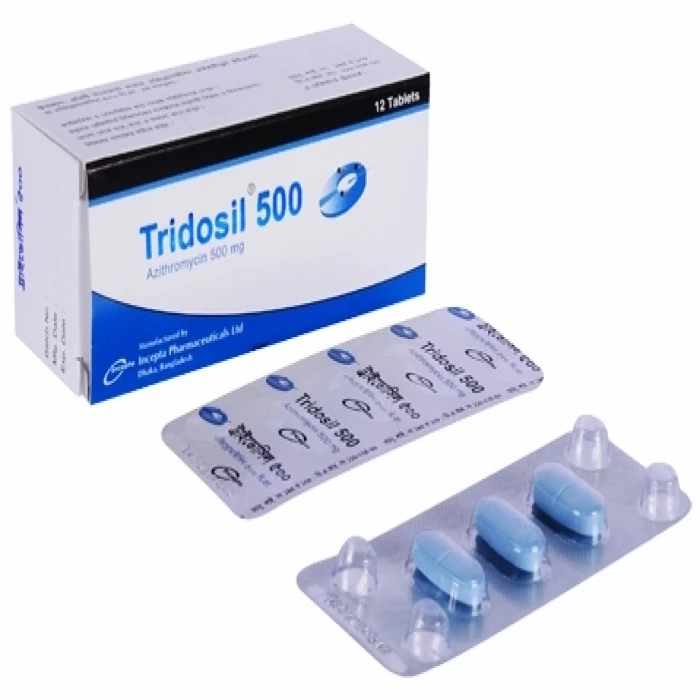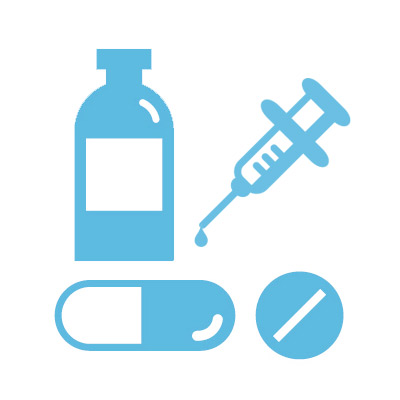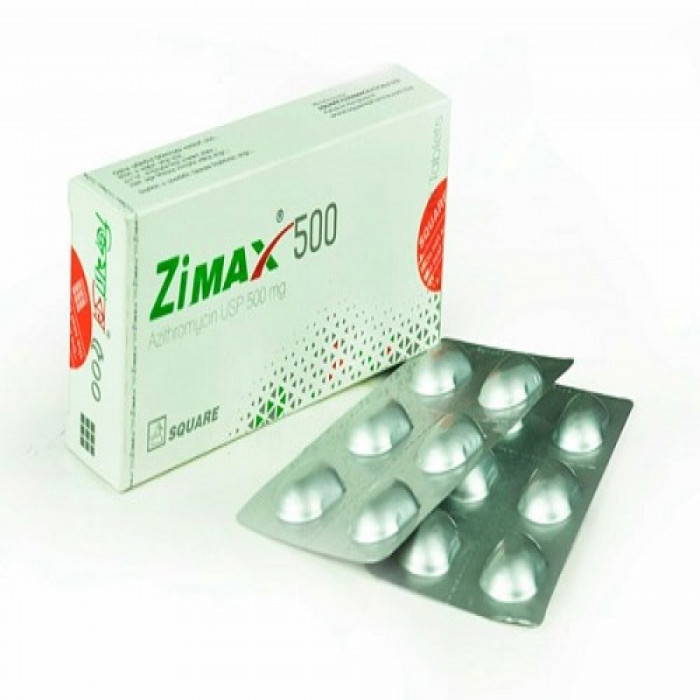
✔ 100% Authentic Product
👁️ Currently Viewing 4469
Rozith 500mg Tablet 6Pcs
- The macrolide antibiotic class of drugs includes Rozith 500mg. It is used to treat a variety of bacterial illnesses of the respiratory system, including bronchitis, tonsillitis, pharyngitis, sinusitis, acne, rosacea, ear infections, and sexually transmitted diseases. An infection brought on by bacteria growing within the body is known as a bacterial infection. Any bodily component may be the target, and it multiplies extremely fast.
- By blocking the development of the proteins necessary for the bacterium's life, Rozith 500mg inhibit the growth of hazardous germs and, in certain cases, causes their death. Viral infections like the flu or common cold are not treated by Rozith 500mg.
- Only take Rozith 500mg as directed by your doctor.
Discount
Price: ৳ 285
MRP:
৳
300
5%
Off

100% Genuine Products, Guaranteed

Safe & Secure Payments, Always

Fast, Secure & Efficient Delivery

Proper Packaging
 Cash on Delivery - All over Bangladesh
Cash on Delivery - All over Bangladesh Regular Delivery - 12-24 Hours, Dhaka City* Charge Tk.39-59
Regular Delivery - 12-24 Hours, Dhaka City* Charge Tk.39-59 Regular Delivery - 24-48 Hours, Other Cities* Charge Tk.99-110
Regular Delivery - 24-48 Hours, Other Cities* Charge Tk.99-110
 ফ্রি ডেলিভারিঃ - ৯৯৯ টাকা+ অর্ডারে, ঢাকা
শহরে
ফ্রি ডেলিভারিঃ - ৯৯৯ টাকা+ অর্ডারে, ঢাকা
শহরে ফ্রি ডেলিভারিঃ - ২৯৯৯ টাকা+ অর্ডারে, ঢাকার
বাহিরে
ফ্রি ডেলিভারিঃ - ২৯৯৯ টাকা+ অর্ডারে, ঢাকার
বাহিরে
100% Genuine Products, Guaranteed
Safe & Secure Payments, Always
Fast, Secure & Efficient Delivery
Proper Packaging
 Cash on Delivery - All over Bangladesh
Cash on Delivery - All over Bangladesh Regular Delivery - 12-24 Hours, Dhaka City* Charge Tk.39-59
Regular Delivery - 12-24 Hours, Dhaka City* Charge Tk.39-59 Regular Delivery - 24-48 Hours, Other Cities* Charge Tk.99-110
Regular Delivery - 24-48 Hours, Other Cities* Charge Tk.99-110 ফ্রি ডেলিভারিঃ - ৯৯৯ টাকা+ অর্ডারে, ঢাকা
শহরে
ফ্রি ডেলিভারিঃ - ৯৯৯ টাকা+ অর্ডারে, ঢাকা
শহরে ফ্রি ডেলিভারিঃ - ২৯৯৯ টাকা+ অর্ডারে, ঢাকার
বাহিরে
ফ্রি ডেলিভারিঃ - ২৯৯৯ টাকা+ অর্ডারে, ঢাকার
বাহিরে
✅ Description:
Rozith is an antibiotic used to treat different kinds of bacterial infections in both adult's and children's eyes, skin, lungs, ears, nose, and throat. Additionally, it works well against typhoid fever and a few STDs, including gonorrhea. Rozith is a broad-spectrum antibiotic that works well to eliminate various gram-positive and gram-negative bacteria as well as other microorganisms.
Safety Advices

Alcohol
UNSAFE
It is unsafe to consume alcohol with Rozith 500mg Tablet.

Pregnancy
UNSAFE
The usage of Rozith 500mg Tablet during pregnancy is not sufficiently covered in the literature. As a result, unless specifically prescribed by your doctor, you should avoid using Rozith 500mg Tablet while pregnant.

Breastfeeding
UNSAFE
Rozith 500mg Tablet is partially passed through the mother’s milk, therefore it should not be used if you are breastfeeding.

Driving
CAUTION
There is no information available on how Rozith 500mg Tablet affects a person's capacity for driving or operating machinery. However, Rozith 500mg Tablet may result in seizures and dizziness, so be sure you are not experiencing either before operating machinery or driving a vehicle.
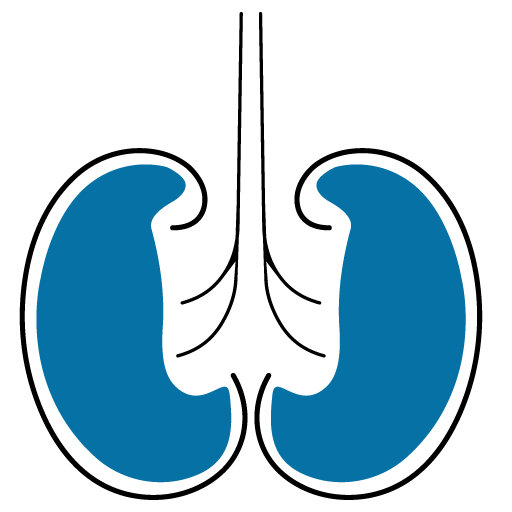
Kidney
CAUTION
You should tell your doctor if you have kidney problems as your doctor may need to alter the normal dose.

Liver
CAUTION
You should tell your doctor if you have liver problems as your doctor may need to alter the normal dose.
✔️ Uses of Rozith
- Treatment of Bacterial infections
✔️ How Rozith works
Rozith is an antibiotic. It works by preventing the synthesis of essential proteins required by bacteria to carry out vital functions. Thus, it stops the bacteria from growing and prevents the infection from spreading.
✔️ Side effects of Rozith
- Vomiting
- NauseaNausea and Vomiting
- Chest pain
- Dizziness
- Fatigue
- Headache
- Rash
- Excessive gas in the stomach
- Photosensitivity of skin
- Abdominal pain
- Diarrhea
✔️ Quick Suggestions:
- Even if you feel better, do not miss any doses and complete the whole course of therapy. If you stop it too soon, the infection can return and be more difficult to cure.
- Take Rozith 500mg Tablet two hours before or after a meal.
- Avoid drinking alcohol while taking Rozith 500mg Tablet since it might dehydrate you and interfere with your sleep. Your body may find it more difficult to support the Rozith 500mg Tablet in fighting off infections as a result.
- Antacids should not be consumed before or after taking Rozith for 2 hours.
- The optimum time to take probiotics is after finishing the entire course of Rozith 500mg Tablet in order to replenish any good bacteria that may have been lost in the gut. The chance of antibiotic-associated diarrhea can be decreased by taking probiotics after receiving antibiotic therapy.
- The adverse effect of diarrhea is possible, but it should go away once your treatment is finished. If it doesn't cease or if you notice blood in your feces, call your doctor.
- If you get an itchy rash, swelling of the face, throat, or tongue, or breathing problems while using Rozith, stop taking it right away and tell your doctor.
✔️ Indication
Rozith Tablet contains Azithromycin which belongs to the group of medicines called Macrolide antibiotics. It is used-
- Treats mild to moderate susceptible infections caused by bacteria and other micro-organisms which include chest, throat, and nasal infections such as bronchitis, pneumonia, tonsillitis, sore throat, and sinusitis.
- Treats ear infections as well as skin and soft tissue infections (such as abscesses and boils) in those who are afflicted.
- Treats those who have contracted sexually transmitted illnesses like cervicitis, which is brought by bacteria like Chlamydia trachomatis and Neisseria gonorrhea.
✔️ Pharmacology
Since azithromycin is acid-stable, it can be taken orally without concern for stomach acid. It takes time to digest; on a cleansed stomach, its retention is more pronounced. For the verbal form, the adult peak development time ranges from 2.1 to 3.2 hours. Azithromycin is effectively transported to the site of contamination because of the high concentration in phagocytic cells. Extremely high azithromycin concentrations are excreted during active phagocytosis. Azithromycin concentrations in tissue can be up to 50 times higher than those in plasma. The high particle uptake and lipid clearance may be the cause of this.
Azithromycin's long half-life enables prolonged administration of a single dose while keeping bacteriostatic levels in infected tissues for a number of days. Azithromycin plasma concentrations decreased polyphonically after a single 500 mg measurement, with a plasma clearance of 630 ml/min and a terminal half-life of 68 hours. The extensive absorption and subsequent tissue clearance are thought to be the causes of the delayed terminal half-life. A major mode of elimination for azithromycin might be the nearly unchanged biliary excretion. Approximately 6% of the administered doses appeared in the urine as an unchanged drug after a week.
Microbiology: Azithromycin effectively affects the 50S ribosomal subunit of susceptible microorganisms and, as a result, interacts with a variety of microbial proteins through interferometry. Mixtures of corrosive nucleic acids are unaffected. It has been demonstrated that azithromycin is resistant to the majority of microorganism absorption limits, both in vitro and during a clinical infection:
Gram-positive bacteria are extremely active and easy to culture: Microorganisms include Streptococcus aureus, Streptococcus pneumonia, Streptococcus agalactiae, and Streptococcus pyogenes facultative. Neisseria gonorrhoeae, Haemophilus ducreyi, Moraxella catarrhalis, and Haemophilus influenzae
It is not anticipated that other microorganisms, such as Chlamydia pneumoniae, Chlamydia trachomatis, or the production of beta-pneumonia lactamases, will have an impact on the production of beta-active azithromycin.
Microbes that are aerobic and gram-positive include streptococci (C, F, and G beams) and streptococcus viridans. Gram-negative bacteria that are aerobic and simple to culture: Legionella pneumophila and Bordetella pertussis
Anaerobic microorganisms: Prevotella Livia and Peptostreptococcus species
✔️ Dosage of Rozith 500mg Tablet
Oral-
Adult:
- Orally take 500 mg once daily for 3 days, or take 250 mg once on days 2 through 5 for 4 days after taking 500 mg once on day 1.
- The dosage for Chlamydia trachomatis-related sexually transmitted diseases in adults is 1 gm given as a single dose, or 500 mg once on day 1 followed by 250 mg once daily for the next 2 days may also be given.
Children:
- 10 mg/kg body weight once daily for three days for kids older than six months
- If your body weight is between 15 and 25 kg, take 200 mg every day for three days.
- If your body weight is 26–35 kg, take 300 mg (112 teaspoonfuls) for three days; if it is 36–45 kg, take 400 mg (2 teaspoonfuls) for three days.
- Typhoid fever is treated with 500 mg (212 teaspoonfuls) once daily for 7–10 days.
✔️ Administration of Rozith 500mg Tablet
- Follow your doctor's instructions for this medication's dosage and duration.
- Take it all in at once. Don't chew it, break it, or crush it.
- Although Rozith can be taken with or without food, it is best to take it at a set time.
✔️ Interaction
Increases the levels of hexobarbital, terfenadine, digoxin, ciclosporin, and phenytoin in the blood. reduced rate of absorption when using antacids with magnesium and aluminum. elevated danger of ergot toxicity. Possible Fatal: Pimozide increases the risk of cardiotoxicity.
✔️ Contraindications
Patients who are extremely sensitive to azithromycin or any other macrolide antibiotic should not take azithromycin. It is not recommended to administer azithromycin and ergot derivatives simultaneously. Patients with hepatic illnesses should not take azithromycin.
✔️ Pregnancy & Lactation
The pregnancy Category of Azithromycin is B. Creature propagation ponders have illustrated that Azithromycin has no proof of hurt to the hatchling. There are no satisfactory and well-controlled considerations in pregnant ladies. Since creature generation thinks are not continuously prescient of human reaction, Azithromycin ought to be utilized amid pregnancy as it were in case satisfactory choices are not accessible. It isn't known whether Azithromycin is emitted in the breast drain. So, caution ought to be worked out when Azithromycin is managed by nursing ladies.
✔️ Precautions & Warnings
- Inform your physician if you have an electrolyte imbalance, myasthenia gravis, arrhythmia, or liver or muscular issues (jaundice). (low potassium or magnesium level).
- If you get watery or bloody diarrhea, stop taking Rozith 500mg Tablet and consult your doctor.
- The usage of Rozith 500mg Tablet may, in rare circumstances, induce diarrhea.
- However, wait until your doctor instructs you before taking any anti-diarrhea medication.
- It is uncertain if Rozith 500mg Tablet hurt the fetus while a woman is pregnant.
- Before using Rozith 500mg Tablet, check with your doctor if you are pregnant, expecting to become pregnant, or nursing a baby.
- If you have a macrolide antibiotic allergy, avoid using Rozith 500mg Tablet.
- If you use medication to decrease your cholesterol, let your doctor know. (statins like simvastatin, lovastatin, etc.), Colchicine and other anti-gout or anti-arthritis medications as well as overactive bladder medications (tolterodine).
- Patients with pneumonia who are deemed unsuitable for oral treatment due to moderate to severe sickness or risk factors should not use Rozith 500mg Tablet.
✔️ Storage Conditions
Keep in a dry put absent from light and warm. Keep out of the reach of children.
⚠️Disclaimer:
At ePharma, we’re committed to providing accurate and accessible health information. However, all content is intended for informational purposes only and should not replace medical advice from a qualified physician. Please consult your healthcare provider for personalized guidance. We aim to support, not substitute, the doctor-patient relationship.




